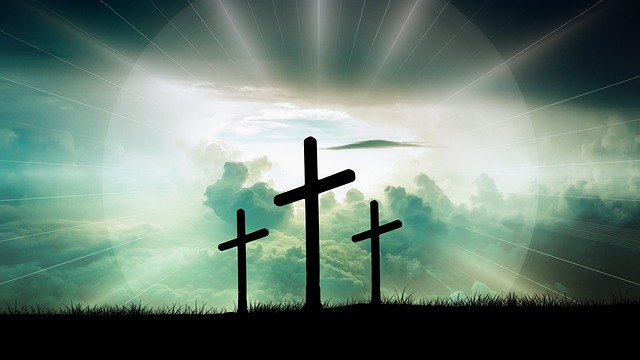Orthodox Christianity and Roman Catholicism are two major branches of Christianity that have evolved over centuries. While they share some similarities in terms of beliefs and practices, there are also significant differences between the two. This introduction aims to provide a brief overview of Orthodox Christianity and Roman Catholicism, highlighting their historical development, theological distinctions, and organizational structures.
Table of Contents
History and Origins of Orthodox Christianity and Roman Catholicism
Orthodox Christianity and Roman Catholicism are two major branches of Christianity that have shaped the religious landscape for centuries. Both have rich histories and deep-rooted traditions that have influenced countless believers around the world. In this article, we will delve into the history and origins of these two branches, exploring their similarities and differences.
Orthodox Christianity traces its roots back to the early days of Christianity, when the apostles spread the teachings of Jesus Christ. The term “Orthodox” comes from the Greek word “orthodoxia,” meaning “right belief.” The Orthodox Church believes that it has preserved the original teachings of Christ and the apostles, remaining faithful to the traditions and practices established in the early Christian communities.
On the other hand, Roman Catholicism emerged as a distinct branch of Christianity in the 1st century AD, with its origins in the city of Rome. The Roman Catholic Church claims its authority from the apostle Peter, whom they believe was the first bishop of Rome and the foundation of their papal authority. The term “Catholic” means “universal,” emphasizing the church’s belief in its worldwide reach and influence.
While both Orthodox Christianity and Roman Catholicism share common roots in early Christianity, they have diverged over time due to various historical and theological factors. One significant difference lies in the structure and authority of their respective churches. In Orthodox Christianity, each local church is autonomous and governed by a council of bishops, with no single figurehead holding supreme authority. In contrast, Roman Catholicism is centralized under the leadership of the Pope, who is considered the successor of Peter and the head of the worldwide Catholic Church.
Another key distinction between the two branches is their approach to theology and doctrine. Orthodox Christianity places a strong emphasis on mystical and experiential aspects of faith, with a focus on the divine mystery and the transformative power of the Holy Spirit. Roman Catholicism, on the other hand, places greater emphasis on the intellectual and philosophical aspects of theology, with a strong tradition of scholasticism and systematic theology.
Furthermore, the liturgical practices of Orthodox Christianity and Roman Catholicism also differ. Orthodox worship is characterized by its rich symbolism, elaborate rituals, and the extensive use of icons. The Divine Liturgy, the central act of worship in the Orthodox Church, is a solemn and mystical experience that transports believers into the presence of God. In contrast, Roman Catholic worship is marked by its reverence for the Eucharist, with the Mass being the central act of worship. The Mass is a structured and ritualistic service that commemorates the Last Supper and the sacrifice of Christ.
In conclusion, the history and origins of Orthodox Christianity and Roman Catholicism reveal the complex and intertwined nature of these two branches of Christianity. While they share common roots in early Christianity, they have developed distinct traditions, structures, and theological emphases over time. Understanding these differences can foster greater appreciation and dialogue between believers of both traditions, as they seek to live out their faith in a diverse and ever-changing world.
Differences in Doctrines and Beliefs between Orthodox Christianity and Roman Catholicism

Orthodox Christianity and Roman Catholicism are two major branches of Christianity that have evolved over centuries. While they share many similarities, there are also significant differences in their doctrines and beliefs. In this article, we will explore some of these differences and shed light on the distinctiveness of each tradition.
One of the primary differences between Orthodox Christianity and Roman Catholicism lies in their understanding of the nature of the Church. Orthodox Christians believe that the Church is a mystical body, where all believers are united in Christ. They emphasize the importance of the local church and the authority of the bishop. On the other hand, Roman Catholics view the Church as a hierarchical institution with the Pope as its head. They believe in the primacy of the Pope and his infallibility in matters of faith and morals.
Another significant difference is the approach to the Holy Scriptures. Orthodox Christians hold a deep reverence for the Bible, considering it as the inspired Word of God. However, they also rely on the Holy Tradition, which includes the teachings of the early Church fathers and the decisions of the Ecumenical Councils. Roman Catholics, while also valuing the Bible, place a greater emphasis on the authority of the Church and its interpretation of Scripture. They believe that the Pope, guided by the Holy Spirit, has the final say in matters of interpretation.
The understanding of salvation is yet another area where Orthodox Christianity and Roman Catholicism diverge. Orthodox Christians believe in theosis, the process of becoming one with God’s divine nature. They emphasize the transformative power of God’s grace and the cooperation of the believer through faith and good works. Roman Catholics, on the other hand, emphasize the role of sacraments in salvation. They believe that through the sacraments, particularly baptism and the Eucharist, believers receive God’s grace, which is necessary for salvation.
The veneration of saints is also approached differently in Orthodox Christianity and Roman Catholicism. Orthodox Christians hold a deep reverence for the saints, considering them as intercessors and examples of holy living. They believe that the saints are alive in Christ and can pray for the living. Roman Catholics, while also venerating the saints, have a more elaborate system of canonization. They believe that the Pope has the authority to declare someone a saint, and they often seek the intercession of specific saints for various needs.
Lastly, the issue of original sin and the Immaculate Conception sets Orthodox Christianity and Roman Catholicism apart. Orthodox Christians believe in the inherited consequences of Adam and Eve’s sin, but they do not believe in the concept of original sin as understood in Roman Catholicism. Roman Catholics believe that Mary, the mother of Jesus, was conceived without original sin, a doctrine known as the Immaculate Conception. This belief is not shared by Orthodox Christians, who hold that Mary was a faithful and righteous woman but still subject to the consequences of original sin.
In conclusion, Orthodox Christianity and Roman Catholicism, while sharing a common foundation in Christianity, have distinct differences in their doctrines and beliefs. These differences range from the understanding of the nature of the Church and the authority of the Pope to the approach to the Holy Scriptures, salvation, the veneration of saints, and the concept of original sin. Understanding these differences can foster dialogue and mutual respect between these two rich traditions, ultimately enriching the broader Christian faith.
Worship Practices and Liturgical Traditions in Orthodox Christianity and Roman Catholicism
Orthodox Christianity and Roman Catholicism are two major branches of Christianity that have many similarities, but also some distinct differences. One area where these differences become apparent is in their worship practices and liturgical traditions. Both Orthodox Christianity and Roman Catholicism place a strong emphasis on the importance of worship and have developed rich liturgical traditions over the centuries.
In Orthodox Christianity, worship is seen as a communal experience that involves the entire congregation. The liturgy is conducted in the local language, but there are also elements of the service that are conducted in ancient languages such as Greek or Slavonic. The use of incense, icons, and elaborate vestments adds to the sense of reverence and beauty in Orthodox worship. The congregation stands throughout the service, and there is a great deal of chanting and singing. The liturgy is seen as a participation in the heavenly worship of God, and the goal is to create a sense of awe and transcendence.
Roman Catholic worship, on the other hand, also emphasizes the communal nature of worship, but there are some key differences in the liturgical practices. The liturgy is conducted in the local language, but Latin is still used for certain prayers and hymns. The use of incense, icons, and vestments is also common in Roman Catholic worship, although the style and symbolism may differ slightly from Orthodox practices. In Roman Catholicism, the congregation may sit, stand, or kneel at different points in the service, depending on the tradition and local customs. There is also a greater emphasis on the role of the priest as the mediator between God and the congregation.
Both Orthodox Christianity and Roman Catholicism have a rich tradition of liturgical music. In Orthodox worship, the music is often sung a cappella and is characterized by its haunting melodies and intricate harmonies. Chanting is an integral part of the liturgy and is seen as a way to elevate the soul and draw closer to God. In Roman Catholic worship, there is a greater variety of musical styles, ranging from traditional hymns to contemporary worship songs. The use of instruments such as the organ or piano is also common in Roman Catholic worship.
Another important aspect of worship in both Orthodox Christianity and Roman Catholicism is the use of icons. Icons are sacred images that are used as aids to prayer and meditation. In Orthodox Christianity, icons are venerated and are seen as windows into the divine. They are often kissed or touched as a sign of reverence. In Roman Catholicism, icons are also used, but there is a greater emphasis on statues and other three-dimensional representations of saints and biblical figures.
In conclusion, while there are many similarities between Orthodox Christianity and Roman Catholicism in terms of their worship practices and liturgical traditions, there are also some distinct differences. Both traditions place a strong emphasis on the importance of worship and have developed rich liturgical traditions over the centuries. However, the specific practices and customs may vary slightly between the two branches of Christianity. Whether one chooses to worship in an Orthodox or Roman Catholic church, the goal is the same – to draw closer to God and experience the presence of the divine in a communal setting.
Ecumenical Movements and Relations between Orthodox Christianity and Roman Catholicism
Orthodox Christianity and Roman Catholicism are two major branches of Christianity that have a long and complex history. Over the centuries, there have been various ecumenical movements and efforts to improve relations between these two traditions. In this article, we will explore the ecumenical movements and the current state of relations between Orthodox Christianity and Roman Catholicism.
One of the most significant ecumenical movements between Orthodox Christianity and Roman Catholicism was the Second Vatican Council, which took place from 1962 to 1965. This council aimed to promote unity among Christians and address the challenges of the modern world. During the council, there were discussions and dialogues between representatives of the Roman Catholic Church and various Orthodox Churches.
The Second Vatican Council resulted in several important documents that addressed the relationship between the Roman Catholic Church and other Christian traditions, including Orthodox Christianity. One of these documents, the Decree on Ecumenism, emphasized the importance of dialogue and collaboration between Christians of different traditions. It recognized the value of the spiritual heritage of the Eastern Churches, including the Orthodox Church, and called for mutual respect and understanding.
Since the Second Vatican Council, there have been ongoing efforts to improve relations between Orthodox Christianity and Roman Catholicism. These efforts have included theological dialogues, joint statements, and visits between leaders of the two traditions. These initiatives have aimed to address theological differences, historical grievances, and promote greater understanding and cooperation.
One of the key areas of theological difference between Orthodox Christianity and Roman Catholicism is the issue of papal primacy. The Orthodox Church does not recognize the authority of the Pope as the supreme head of the Church, while Roman Catholicism sees the Pope as the successor of Saint Peter and the visible head of the Church. This difference has been a significant obstacle to closer relations between the two traditions.
Despite these differences, there have been some positive developments in recent years. In 2016, Pope Francis and Patriarch Kirill of Moscow and All Russia met in Cuba, marking the first meeting between a Pope and a Russian Orthodox Patriarch in nearly a thousand years. This historic meeting resulted in a joint declaration that emphasized the need for unity and cooperation between the two traditions.
In addition to these high-level meetings, there have been ongoing theological dialogues between representatives of Orthodox Christianity and Roman Catholicism. These dialogues have addressed various theological issues, including the role of the Pope, the nature of the Church, and the sacraments. While these dialogues have not yet resolved all the differences between the two traditions, they have helped to foster greater understanding and respect.
In conclusion, the ecumenical movements and efforts to improve relations between Orthodox Christianity and Roman Catholicism have made significant progress in recent decades. While there are still theological differences that need to be addressed, there is a growing recognition of the need for unity and cooperation between these two major branches of Christianity. Through ongoing dialogue and collaboration, it is hoped that Orthodox Christianity and Roman Catholicism can continue to build bridges and work towards greater unity in the future.
Conclusion
In conclusion, Orthodox Christianity and Roman Catholicism are two distinct branches of Christianity with significant theological and cultural differences. While both share common beliefs in the divinity of Jesus Christ and the importance of sacraments, they differ in terms of church structure, liturgical practices, and doctrinal interpretations. Orthodox Christianity emphasizes the authority of the Holy Tradition and the autonomy of individual churches, while Roman Catholicism places greater emphasis on the authority of the Pope and the centralized structure of the Church. These differences have led to separate religious traditions and practices within each branch.
For licensing reasons, we must provide the following notice: This content was created in part with the help of an AI.


